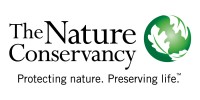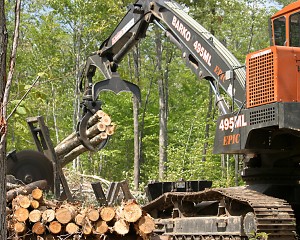Small, scrappy, and more nimble than ever, Finch Paper is a sustainability giant in the uncoated freesheet sector. Its cadre of professional foresters for hire is just one reason why.

I’ve just returned from spending a few days with
Finch Paper, which operates a small, integrated pulp and uncoated freesheet paper mill on the Hudson River in upstate New York. Finch’s story is one of those metamorphic, “pull yourself back from the-brink and emerge as a scrappier, more-sustainable business” sagas that I, for one, like to read about.
A bit of background is in order. Founded as
Finch-Pruyn & Co. in 1865 as a quarry operation, sawmill and lumberyard, the company began making paper (newsprint in the early days) in 1904. Finch has had, for most of its tenure, all of the traditional trappings of the integrated producer of its day – family ownership and day-to-day control, a top-down hierarchical management style, close ties to the local community, and ownership of vast amounts of forestland within a 100-mile radius of its facility to feed the machines.
In 2002, Finch-Pruyn’s 161,000-acre forest estate in Adirondack Park was certified as compliant with the forest-management standards of the Sustainable Forestry Initiative. In 2003, the company obtained FSC forest management certification for all of its lands. It also obtained FSC Chain-of-Custody certification for its pulp and paper facilities, making it the first fully integrated paper company in the US to hold such credentials.

In April, 2007, feeling the increased burden of debt, and reeling from the triple-whammy of state, federal, and capital gains taxes on its forestlands and harvest production, Finch-Pruyn’s private owners sold the company to
Finch Paper Holdings, a joint venture of
Blue Wolf Capital Management and
Atlas Holdings. At the same time, the company’s Adirondack Forest estate was sold – not to another pulp company or to a developer, but to
The Nature Conservancy (TNC), a non-profit organization committed to the protection of lands of immense biological, ecological and economic importance.
As Finch-Pruyn had done, TNC elected to keep these lands as working forests, generating revenue from the sale of sawlogs, veneer wood and pulpwood and from recreational land-use leases. To ensure that the lands would be managed responsibly with an eye toward conserving the multiple non-timber values of the forest while ensuring sustainable production of wood fiber, TNC placed the management of this Adirondack forest into the hands of
Finch Forest Management, a department of Finch Paper comprised of the very same group of professional foresters that had managed the estate for Finch-Pruyn. This includes V.P.
Roger Dziengeleski, who is brings the resource perspective to Finch’s senior management team.

It is an approach that has resulted in multiple “wins.” Finch Paper retains access to a high-quality wood supply for its pulp and paper operations, but no longer has the tax burden of forest ownership. The Nature Conservancy advances its goal of protecting the Adirondack Forest from encroaching development, and generates significant revenue from recreational leasing, the sale of pulpwood to Finch Paper, and the sale of sawlogs and veneer wood to other producers.
Finch also was able to create the opportunity to transform a cost-center, its stable of professional foresters, into a profit-center through the creation of Finch Forest Management. In addition to its forest management work on behalf of TNC, Finch Forest Management is actively seeking additional landowner-clients in the areas. Some of these are likely to be families that own productive forestland but, at present, look forward only one or two decades and don’t have formal, generational management plans in place. Among the services the Finch Forest Management is offering to these clients are: assistance with earning forest-management certification; management of state and local permitting processes; responsible timber harvest planning and supervision; development of revenue-producing leasing opportunities; and long-term forest management planning. This is important to Finch Paper, as the TNC holdings provide only a fraction of the total volume in its wood-basket. If properly managed, smallholdings and family forests represent a very valuable sustainable resource asset.
Finch Forest Management takes a generational approach to its forest management plans, preferencing the even-aged “shelterwood” silvicultural technique. In even-aged forests, there is typically no more than 20 years difference in age between the oldest and youngest trees. In Adirondack Park, the trees have a natural life cycle of from 80-150 years, depending on species, location and other factors.
Let’s apply the shelterwood management technique to an area of forest with trees having a 120-year life cycle. With this approach, each tract of forest would be entered for harvest only once in any 20 year period, at which time only about 15% of harvestable trees (40-years of age) will be removed. Only the weaker, poorer-quality trees are cut, opening-up the canopy, and encouraging vertical growth of the healthier remaining trees. This process is repeated over time, culminating in a “seed tree cut” in which a preponderance of the trees is removed, leaving very large, mature “seed trees” which supply the genetic material for natural regeneration of the forest. The seed tree cut simulates the impact of a severe ice or wind storm on the mature forest. In the open space created by the removal of most, but not all, of the trees, the forest regenerates naturally. And because the seed trees left standing are among the most genetically “fit” specimens in the tract, the next-generation forest is likely to be robust, healthy, and reflective of the best physical characteristics of each parent species. Eventually, the seed trees are removed, and the cycle begins again.
Though tiny Finch Paper commands only about two percent of the uncoated freesheet market, its entrepreneurial spirit, responsiveness to customers on both the resource and product ends of the spectrum, and its multi-generational outlook to its business are helping to make it a sustainability giant in its sector.
 I’ve just returned from spending a few days with Finch Paper, which operates a small, integrated pulp and uncoated freesheet paper mill on the Hudson River in upstate New York. Finch’s story is one of those metamorphic, “pull yourself back from the-brink and emerge as a scrappier, more-sustainable business” sagas that I, for one, like to read about.
A bit of background is in order. Founded as Finch-Pruyn & Co. in 1865 as a quarry operation, sawmill and lumberyard, the company began making paper (newsprint in the early days) in 1904. Finch has had, for most of its tenure, all of the traditional trappings of the integrated producer of its day – family ownership and day-to-day control, a top-down hierarchical management style, close ties to the local community, and ownership of vast amounts of forestland within a 100-mile radius of its facility to feed the machines.
In 2002, Finch-Pruyn’s 161,000-acre forest estate in Adirondack Park was certified as compliant with the forest-management standards of the Sustainable Forestry Initiative. In 2003, the company obtained FSC forest management certification for all of its lands. It also obtained FSC Chain-of-Custody certification for its pulp and paper facilities, making it the first fully integrated paper company in the US to hold such credentials.
I’ve just returned from spending a few days with Finch Paper, which operates a small, integrated pulp and uncoated freesheet paper mill on the Hudson River in upstate New York. Finch’s story is one of those metamorphic, “pull yourself back from the-brink and emerge as a scrappier, more-sustainable business” sagas that I, for one, like to read about.
A bit of background is in order. Founded as Finch-Pruyn & Co. in 1865 as a quarry operation, sawmill and lumberyard, the company began making paper (newsprint in the early days) in 1904. Finch has had, for most of its tenure, all of the traditional trappings of the integrated producer of its day – family ownership and day-to-day control, a top-down hierarchical management style, close ties to the local community, and ownership of vast amounts of forestland within a 100-mile radius of its facility to feed the machines.
In 2002, Finch-Pruyn’s 161,000-acre forest estate in Adirondack Park was certified as compliant with the forest-management standards of the Sustainable Forestry Initiative. In 2003, the company obtained FSC forest management certification for all of its lands. It also obtained FSC Chain-of-Custody certification for its pulp and paper facilities, making it the first fully integrated paper company in the US to hold such credentials.
 In April, 2007, feeling the increased burden of debt, and reeling from the triple-whammy of state, federal, and capital gains taxes on its forestlands and harvest production, Finch-Pruyn’s private owners sold the company to Finch Paper Holdings, a joint venture of Blue Wolf Capital Management and Atlas Holdings. At the same time, the company’s Adirondack Forest estate was sold – not to another pulp company or to a developer, but to The Nature Conservancy (TNC), a non-profit organization committed to the protection of lands of immense biological, ecological and economic importance.
As Finch-Pruyn had done, TNC elected to keep these lands as working forests, generating revenue from the sale of sawlogs, veneer wood and pulpwood and from recreational land-use leases. To ensure that the lands would be managed responsibly with an eye toward conserving the multiple non-timber values of the forest while ensuring sustainable production of wood fiber, TNC placed the management of this Adirondack forest into the hands of Finch Forest Management, a department of Finch Paper comprised of the very same group of professional foresters that had managed the estate for Finch-Pruyn. This includes V.P. Roger Dziengeleski, who is brings the resource perspective to Finch’s senior management team.
In April, 2007, feeling the increased burden of debt, and reeling from the triple-whammy of state, federal, and capital gains taxes on its forestlands and harvest production, Finch-Pruyn’s private owners sold the company to Finch Paper Holdings, a joint venture of Blue Wolf Capital Management and Atlas Holdings. At the same time, the company’s Adirondack Forest estate was sold – not to another pulp company or to a developer, but to The Nature Conservancy (TNC), a non-profit organization committed to the protection of lands of immense biological, ecological and economic importance.
As Finch-Pruyn had done, TNC elected to keep these lands as working forests, generating revenue from the sale of sawlogs, veneer wood and pulpwood and from recreational land-use leases. To ensure that the lands would be managed responsibly with an eye toward conserving the multiple non-timber values of the forest while ensuring sustainable production of wood fiber, TNC placed the management of this Adirondack forest into the hands of Finch Forest Management, a department of Finch Paper comprised of the very same group of professional foresters that had managed the estate for Finch-Pruyn. This includes V.P. Roger Dziengeleski, who is brings the resource perspective to Finch’s senior management team.
 It is an approach that has resulted in multiple “wins.” Finch Paper retains access to a high-quality wood supply for its pulp and paper operations, but no longer has the tax burden of forest ownership. The Nature Conservancy advances its goal of protecting the Adirondack Forest from encroaching development, and generates significant revenue from recreational leasing, the sale of pulpwood to Finch Paper, and the sale of sawlogs and veneer wood to other producers.
Finch also was able to create the opportunity to transform a cost-center, its stable of professional foresters, into a profit-center through the creation of Finch Forest Management. In addition to its forest management work on behalf of TNC, Finch Forest Management is actively seeking additional landowner-clients in the areas. Some of these are likely to be families that own productive forestland but, at present, look forward only one or two decades and don’t have formal, generational management plans in place. Among the services the Finch Forest Management is offering to these clients are: assistance with earning forest-management certification; management of state and local permitting processes; responsible timber harvest planning and supervision; development of revenue-producing leasing opportunities; and long-term forest management planning. This is important to Finch Paper, as the TNC holdings provide only a fraction of the total volume in its wood-basket. If properly managed, smallholdings and family forests represent a very valuable sustainable resource asset.
Finch Forest Management takes a generational approach to its forest management plans, preferencing the even-aged “shelterwood” silvicultural technique. In even-aged forests, there is typically no more than 20 years difference in age between the oldest and youngest trees. In Adirondack Park, the trees have a natural life cycle of from 80-150 years, depending on species, location and other factors.
Let’s apply the shelterwood management technique to an area of forest with trees having a 120-year life cycle. With this approach, each tract of forest would be entered for harvest only once in any 20 year period, at which time only about 15% of harvestable trees (40-years of age) will be removed. Only the weaker, poorer-quality trees are cut, opening-up the canopy, and encouraging vertical growth of the healthier remaining trees. This process is repeated over time, culminating in a “seed tree cut” in which a preponderance of the trees is removed, leaving very large, mature “seed trees” which supply the genetic material for natural regeneration of the forest. The seed tree cut simulates the impact of a severe ice or wind storm on the mature forest. In the open space created by the removal of most, but not all, of the trees, the forest regenerates naturally. And because the seed trees left standing are among the most genetically “fit” specimens in the tract, the next-generation forest is likely to be robust, healthy, and reflective of the best physical characteristics of each parent species. Eventually, the seed trees are removed, and the cycle begins again.
Though tiny Finch Paper commands only about two percent of the uncoated freesheet market, its entrepreneurial spirit, responsiveness to customers on both the resource and product ends of the spectrum, and its multi-generational outlook to its business are helping to make it a sustainability giant in its sector.
It is an approach that has resulted in multiple “wins.” Finch Paper retains access to a high-quality wood supply for its pulp and paper operations, but no longer has the tax burden of forest ownership. The Nature Conservancy advances its goal of protecting the Adirondack Forest from encroaching development, and generates significant revenue from recreational leasing, the sale of pulpwood to Finch Paper, and the sale of sawlogs and veneer wood to other producers.
Finch also was able to create the opportunity to transform a cost-center, its stable of professional foresters, into a profit-center through the creation of Finch Forest Management. In addition to its forest management work on behalf of TNC, Finch Forest Management is actively seeking additional landowner-clients in the areas. Some of these are likely to be families that own productive forestland but, at present, look forward only one or two decades and don’t have formal, generational management plans in place. Among the services the Finch Forest Management is offering to these clients are: assistance with earning forest-management certification; management of state and local permitting processes; responsible timber harvest planning and supervision; development of revenue-producing leasing opportunities; and long-term forest management planning. This is important to Finch Paper, as the TNC holdings provide only a fraction of the total volume in its wood-basket. If properly managed, smallholdings and family forests represent a very valuable sustainable resource asset.
Finch Forest Management takes a generational approach to its forest management plans, preferencing the even-aged “shelterwood” silvicultural technique. In even-aged forests, there is typically no more than 20 years difference in age between the oldest and youngest trees. In Adirondack Park, the trees have a natural life cycle of from 80-150 years, depending on species, location and other factors.
Let’s apply the shelterwood management technique to an area of forest with trees having a 120-year life cycle. With this approach, each tract of forest would be entered for harvest only once in any 20 year period, at which time only about 15% of harvestable trees (40-years of age) will be removed. Only the weaker, poorer-quality trees are cut, opening-up the canopy, and encouraging vertical growth of the healthier remaining trees. This process is repeated over time, culminating in a “seed tree cut” in which a preponderance of the trees is removed, leaving very large, mature “seed trees” which supply the genetic material for natural regeneration of the forest. The seed tree cut simulates the impact of a severe ice or wind storm on the mature forest. In the open space created by the removal of most, but not all, of the trees, the forest regenerates naturally. And because the seed trees left standing are among the most genetically “fit” specimens in the tract, the next-generation forest is likely to be robust, healthy, and reflective of the best physical characteristics of each parent species. Eventually, the seed trees are removed, and the cycle begins again.
Though tiny Finch Paper commands only about two percent of the uncoated freesheet market, its entrepreneurial spirit, responsiveness to customers on both the resource and product ends of the spectrum, and its multi-generational outlook to its business are helping to make it a sustainability giant in its sector.









